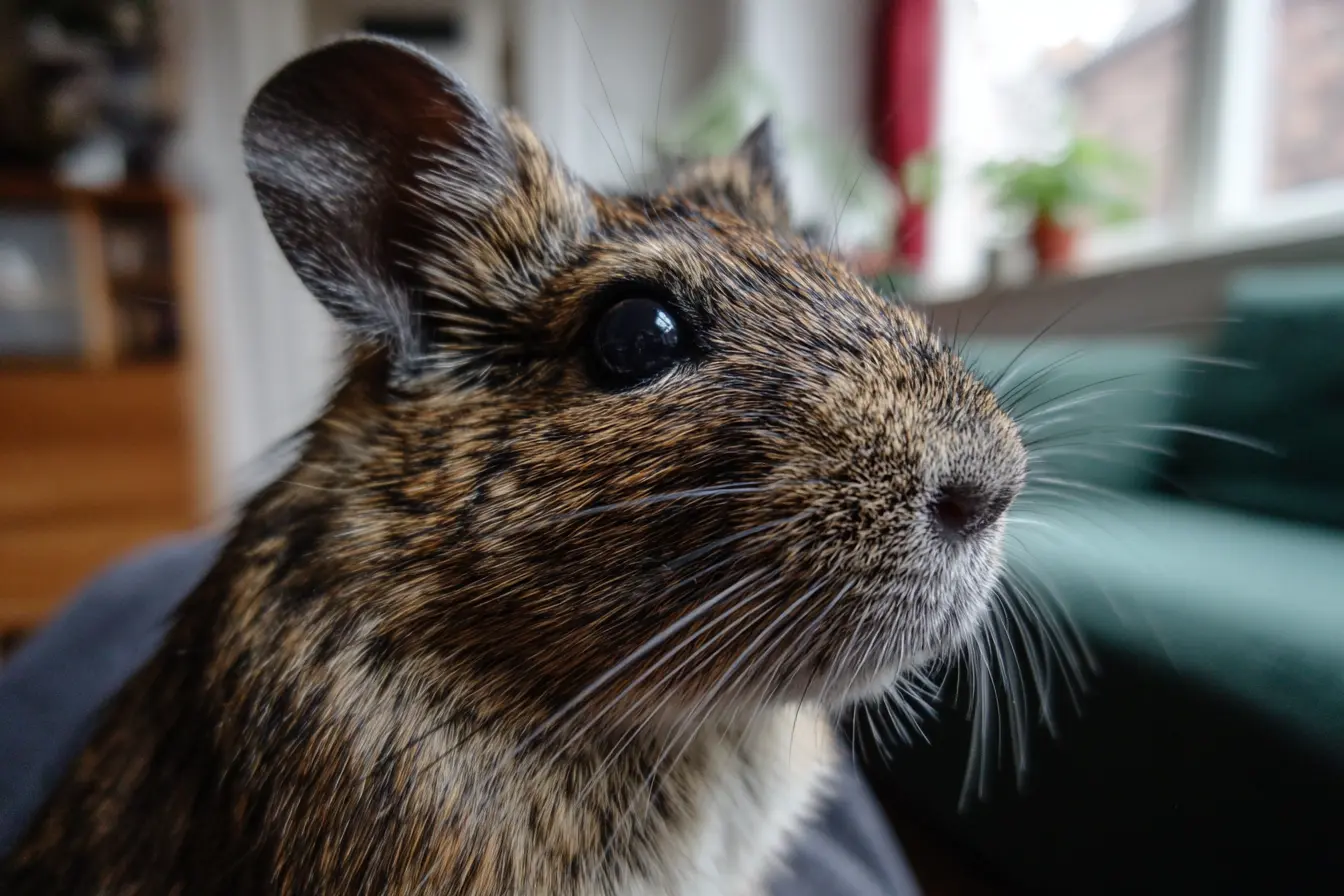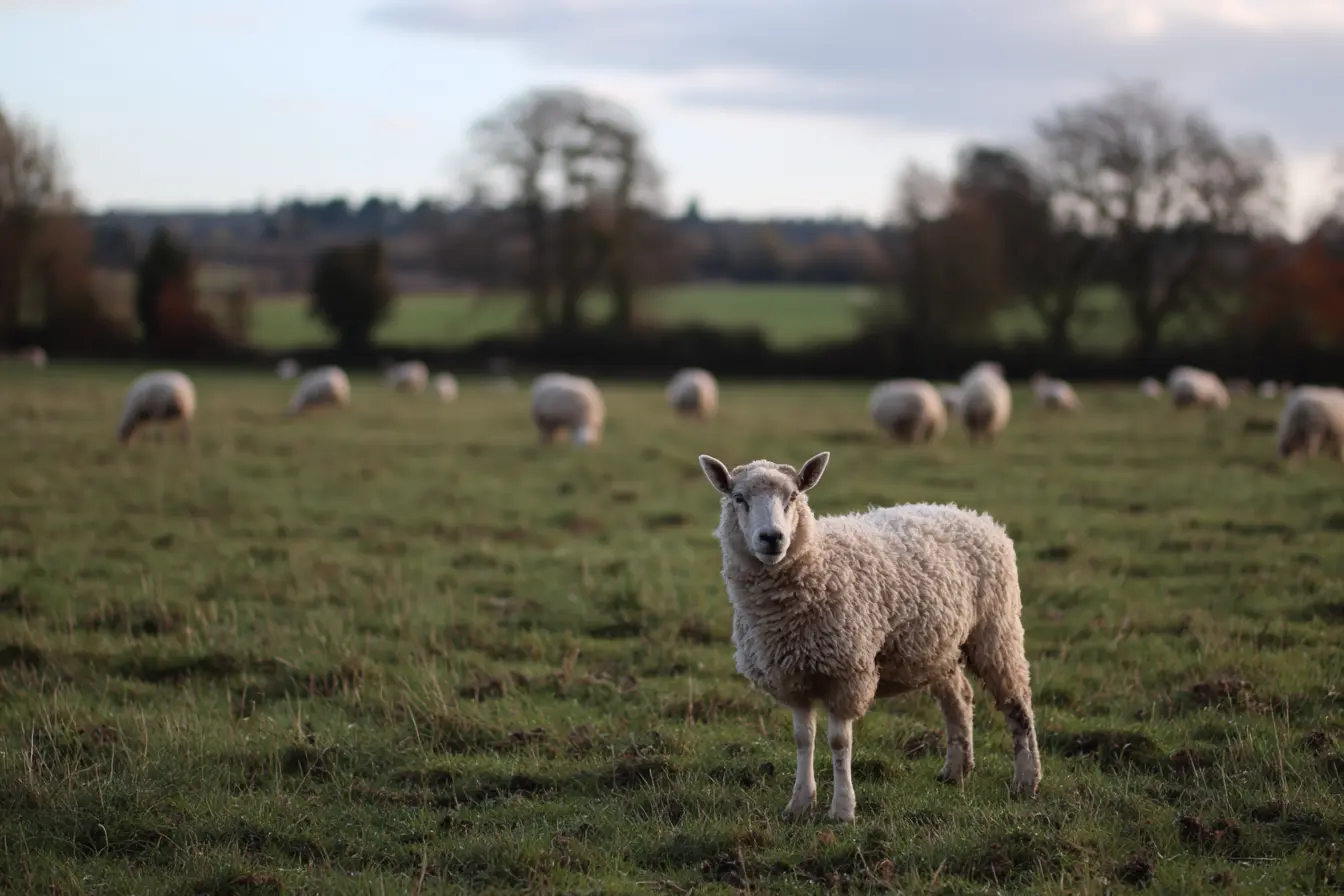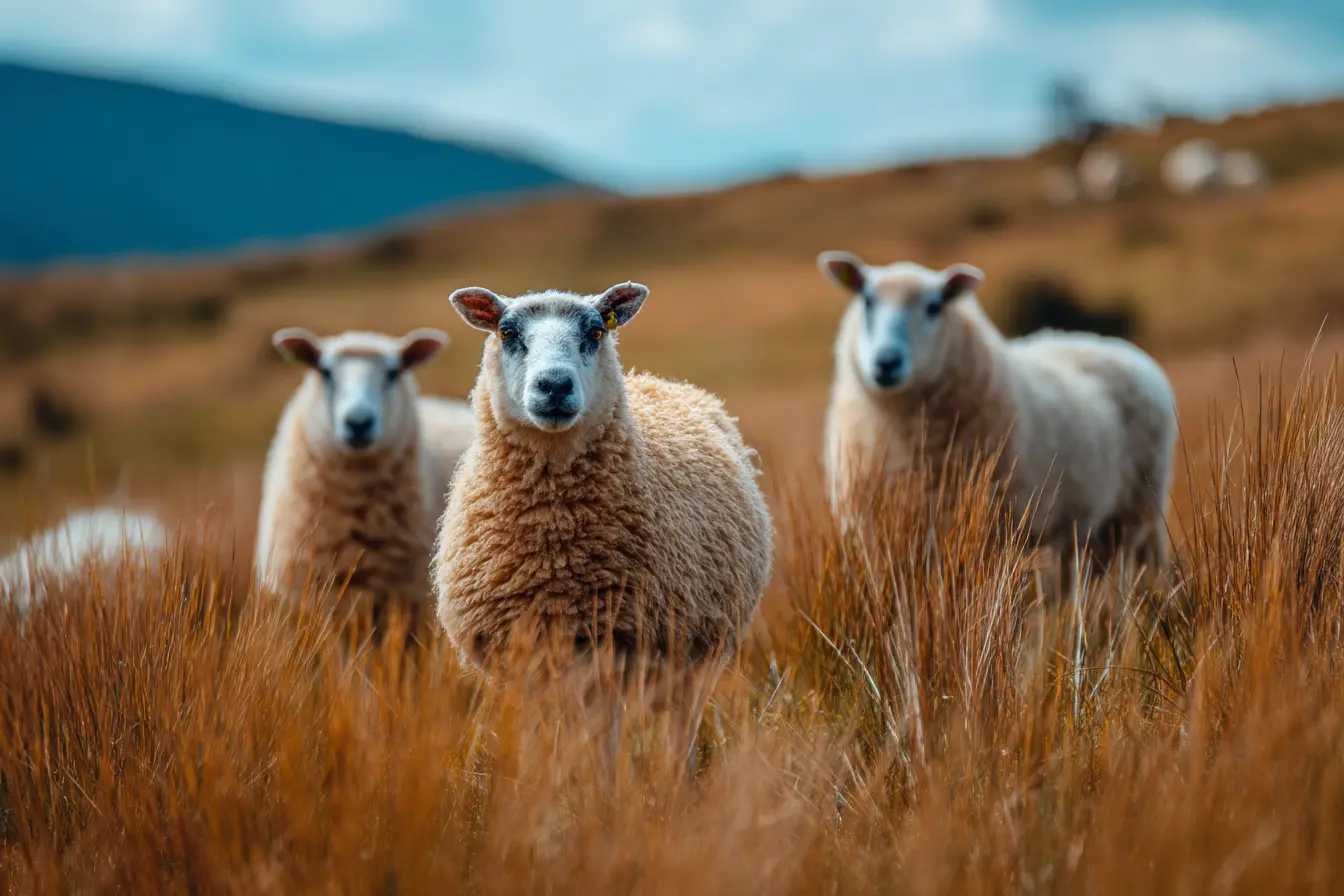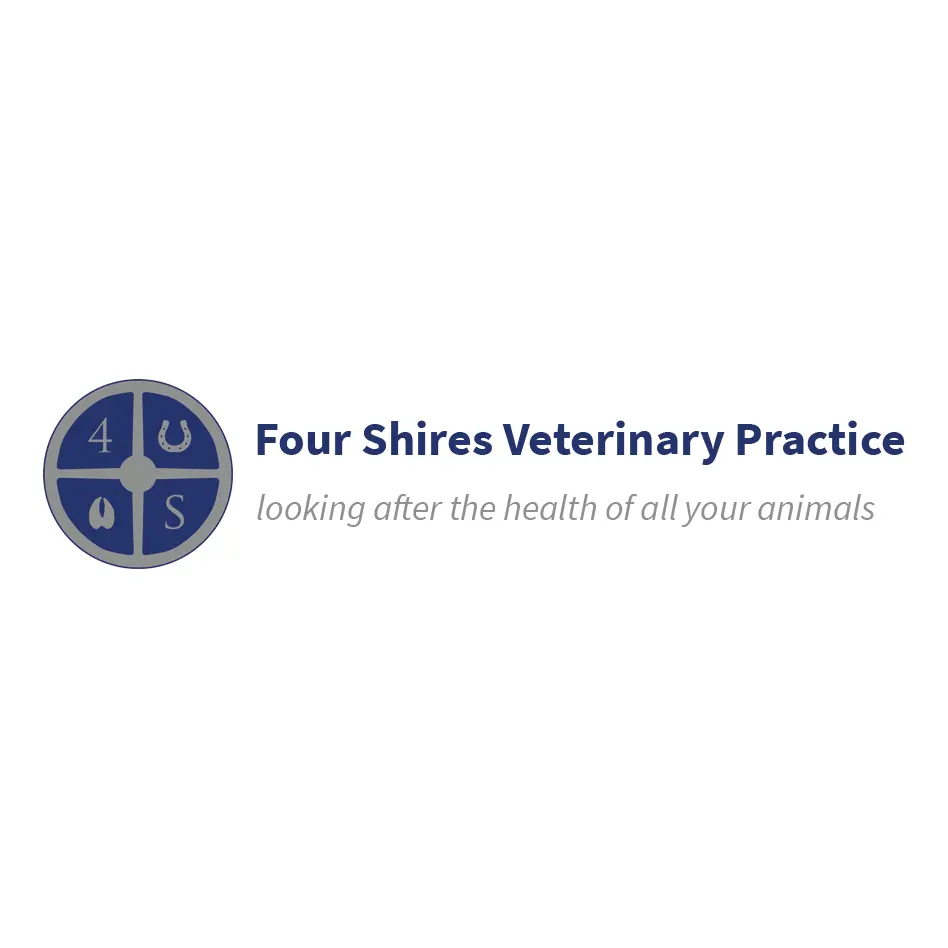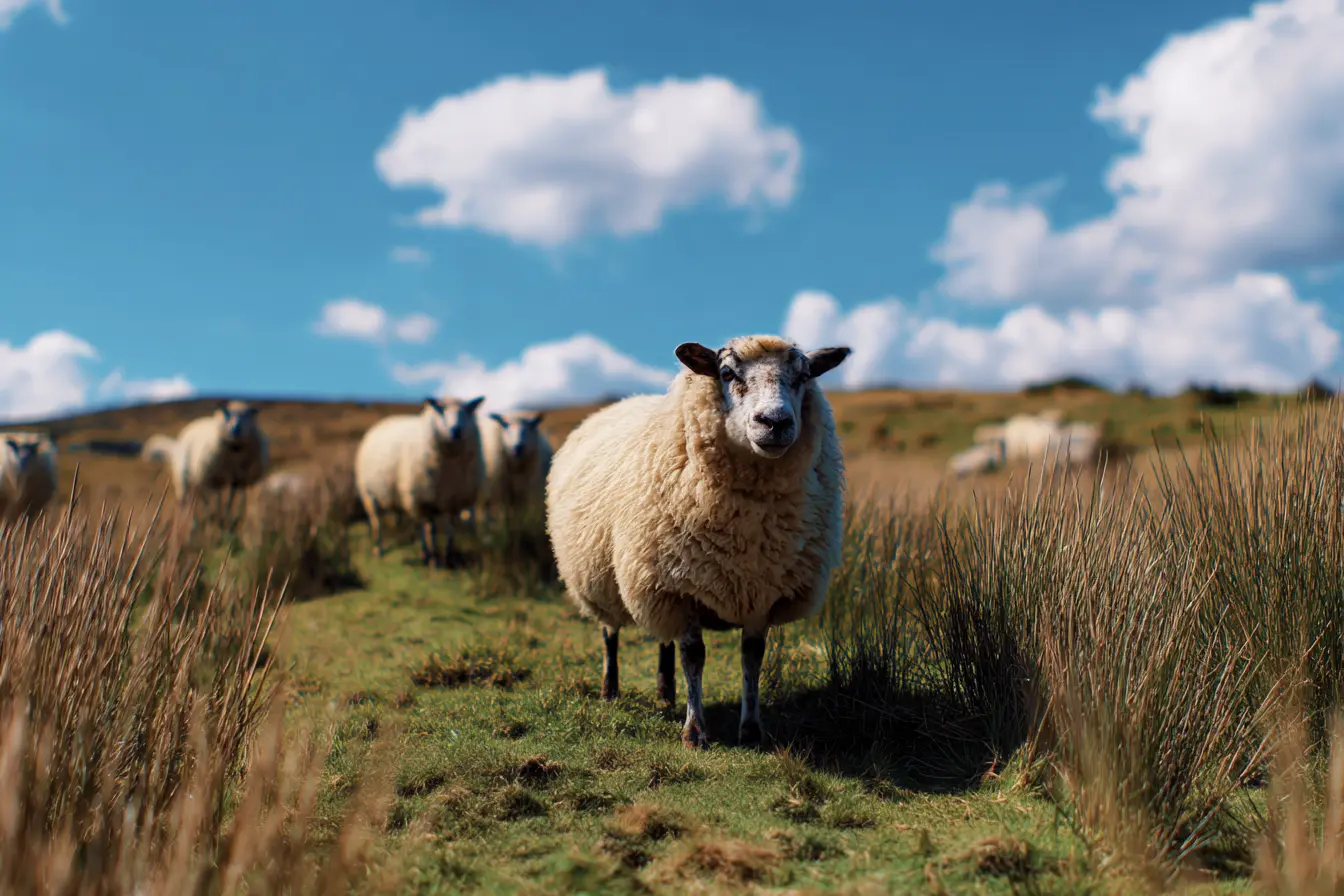
Sheep and Sunburn: Essential Advice for Farmers and Owners
Sheep are often associated with resilience and hardiness, but they are not immune to the dangers of sun exposure. After shearing, or in certain breeds with sparse or light-coloured fleece, sheep can become highly vulnerable to sunburn. Sun damage can lead to serious welfare concerns, including pain, infection, and long-term skin damage. This guide covers everything owners and farmers need to know about sheep and sunburn — from prevention to treatment.
Can Sheep Really Get Sunburned?
Yes, sheep can suffer from sunburn, particularly when their fleece offers little to no protection. Newly shorn sheep are especially at risk because the wool, which normally acts as a natural barrier against ultraviolet (UV) rays, is removed. Similarly, breeds with light skin pigmentation are more susceptible to sun damage.
Which Sheep Are Most at Risk?
Sheep most vulnerable to sunburn include:
- Newly shorn sheep: Without fleece, their skin is fully exposed to sunlight.
- White-faced breeds: Such as Suffolk, Dorset, Cheviot, and Texel sheep.
- Lambs: Their skin is thinner and more sensitive.
- Sheep with patchy fleece or skin conditions: Exposed skin areas are particularly prone.
- Albino or very pale-skinned individuals: Lack pigmentation that would otherwise offer some protection.
Sunburn risk is particularly high during late spring and early summer when shearing often coincides with strong sunlight.
Common Areas Affected by Sunburn
The parts of the sheep most commonly affected by sunburn include:
- Back and shoulders
- Ears
- Nose and muzzle
- Face (particularly around the eyes)
- Legs (where fleece is thin or absent)
Sheep lying down in the sun can also expose their bellies and flanks to UV rays.
Signs of Sunburn in Sheep
Sunburn in sheep can present a range of symptoms, from mild irritation to serious injury:
- Red, inflamed, or swollen skin
- Dry, cracked, or peeling patches
- Blistering (in more severe cases)
- Pain and sensitivity (sheep may avoid being handled or touched)
- Reluctance to graze or move
- Secondary infections (pus, odour, increased heat in the affected area)
In severe cases, sunburn can cause systemic stress, affecting the sheep's overall health and productivity.
How to Protect Sheep from Sunburn
Provide Adequate Shade
The most effective prevention method is to provide constant access to shade:
- Trees, hedgerows, and bushes offer natural shade.
- Purpose-built field shelters can provide vital protection, especially for large flocks.
- Mobile shelters can be moved across fields to offer shade in different grazing areas.
Ensure that all animals can access shade simultaneously to prevent crowding and competition.
Time Shearing Carefully
Shearing should ideally be timed to avoid periods of intense sun exposure:
- Avoid shearing immediately before a predicted heatwave.
- If practical, shear earlier in the day to allow sheep to seek shelter during the midday sun.
- Leave a slightly longer fleece if sun exposure is expected to be intense, though this must be balanced with the risk of heat stress.
Use Protective Products
In some cases, especially for show sheep or vulnerable individuals:
- Apply sheep-safe sunblock sprays or creams to exposed skin.
- Always use products recommended by a vet or agricultural advisor to ensure they are non-toxic and safe for ingestion through grooming.
Adjust Grazing Times
If practical, adjust grazing patterns:
- Encourage grazing early in the morning or later in the evening.
- Provide shade at watering points and feeding areas to encourage sheep to rest out of direct sunlight.
Special Considerations: Photosensitisation
Photosensitisation is a condition where the skin becomes abnormally sensitive to sunlight, often triggered by:
- Ingestion of certain plants: St John's Wort, clover, buttercup, and others.
- Liver damage: Often due to toxic plants like ragwort.
Signs of photosensitisation include:
- Severe burning and peeling of skin even after minimal sun exposure
- Blistering and sloughing of the skin
- Depression, reluctance to move, and inappetence
If photosensitisation is suspected, remove affected sheep from sunlight immediately and seek veterinary attention.
Treating Sunburn in Sheep
If a sheep is sunburned:
- Move the animal to a shaded area or indoors immediately.
- Cool the affected areas gently with clean, cool water.
- Apply veterinary-recommended soothing treatments where appropriate.
- Monitor for secondary infections, and administer antibiotics if prescribed by a vet.
- Seek veterinary advice for severe burns, blisters, or signs of systemic illness.
Pain relief and supportive care may be necessary for moderate to severe cases.
Long-Term Risks of Sun Exposure
If not managed properly, prolonged sun exposure can lead to:
- Skin cancers: Especially squamous cell carcinoma, particularly in light-skinned sheep.
- Chronic dermatitis: Thickened, irritated skin that can become a persistent problem.
- Reduced growth rates: Due to pain, reduced grazing, and stress.
Preventative management is far better than dealing with these costly and distressing outcomes.
Final Thoughts
Sheep are naturally resilient animals, but after shearing or in certain breeds, they can be extremely vulnerable to the harmful effects of the sun. Good flock management — including providing shade, careful shearing scheduling, and recognising the signs of sunburn early — can help ensure that your sheep stay healthy and comfortable throughout the summer months.
Related Vets
Vets near you
Speciality vets
- Aquatics vet specialists
- Birds vet specialists
- Camelids vet specialists
- Cats vet specialists
- Cattle vet specialists
- Deer vet specialists
- Dogs vet specialists
- Equines vet specialists
- Exotic vet specialists
- Goats vet specialists
- Pigs vet specialists
- Poultry vet specialists
- Sheep vet specialists
- Small Mammals vet specialists
- Wild vet specialists
